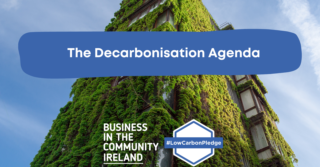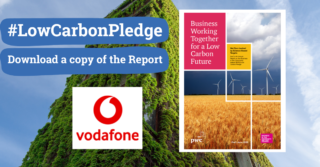What is the Circular Economy? BITCI explains

You might have heard the term “Circular Economy” and wondered what it means. It’s a fairly recent term meant to encompass a number of initiatives, philosophies, and movements (Cradle to Cradle, biomimicry, blue economy, regenerative design and others) that have been ongoing from the 1970s[1]. It’s based on the idea that the Earth has a finite number of resources available for consumption and therefore encourages efficiency and regeneration. More specifically, the Circular Economy is an economic model that attempts to decouple “economic activity from the consumption of finite resources. It is based on three principles:
- Design out waste and pollution
- Keep products and materials in use
- Regenerate natural systems[2]”
As consumers, we might not be able to immediately call to mind the examples ourselves, but it’s quite likely we are participating in the Circular Economy in some way. When you buy anything second-hand (a house, a car, clothing) you are participating in the Circular Economy. When you compost food waste instead of throwing it into the bin, you’re participating in the Circular Economy. When you use a bike rental scheme (Dublin/Cork Bikes) rather than buy your own bicycle, you are participating in the Circular Economy. Consumers participate in the Circular Economy as a “Sustainable Lifestyle” choice but businesses are active in the Circular Economy as well, driven by waste regulation, by cost savings, by competitive advantage, or sometimes just by a larger commitment to having a positive impact on society and the environment.
While some industries are highly circular, today’s stark reality is that only 9% of materials are reused[3]. The World Business Council for Sustainable Development has identified eight key materials that comprise 20% of greenhouse gases, 95% of water use, and 88% of land use[4]. Reducing use of these eight raw materials by sourcing second-hand alternatives from what is today classified as waste could have a dramatically positive impact on all three of these critical environmental priorities. Additionally, because “approximately 62% of [carbon] emissions are released during the extraction, processing and production” of goods, shifting from a linear (take-make-use-dispose) economic model to a circular one would drastically reduce the use of these materials and therefore take us more than halfway toward meeting global emission reduction targets3.
At Business in the Community Ireland we are focussing on Circular Economy because we believe it is a timely topic to be addressed within the context of the Low Carbon Leader’s Group agenda. This brief introduction is the first in a four part series on the Circular Economy where we’ll also explore the business case for Circular Economy and different circular business models, market and regulatory incentives and barriers at the Irish, EU and global levels, and (saving the best for last) circular examples from many of our member companies.
BITCI can support you. If you want to find out more, please contact our Circular Economy expert Maureen O’Donnell
Sources:
(image source: Cambridge Judge Business School)
[1] https://www.ellenmacarthurfoundation.org/circular-economy/concept/schools-of-thought
[2] Ellen MacArthur Foundation.
[3] https://www.circularity-gap.world/climate
[4] https://docs.wbcsd.org/2017/06/CEO_Guide_to_CE.pdf






